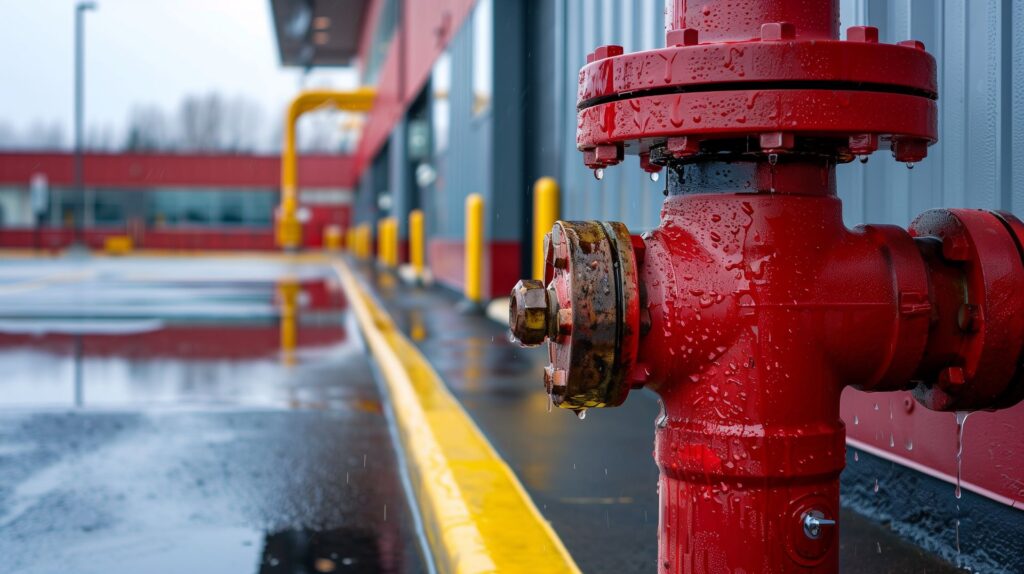In the dynamic world of property development, navigating the intricate landscape of fire engineering regulations is paramount. As cities grow and architectural ambitions reach new heights, developers are tasked not only with bringing their visions to life but also with ensuring the safety and compliance of their projects.
Understanding fire safety standards, from the first sparks of design to the finishing touches, is not just a regulatory necessity; it’s a commitment to protecting lives and preserving property. With regulations evolving in response to innovations and emerging risks, staying informed is crucial.
For property developers, grasping the complexities of these regulations can mean the difference between success and significant setbacks. In this article, well delve into the critical aspects of fire engineering regulations that every property developer should be well-versed in, arming you with the knowledge essential for turning your projects into safe, compliant, and enduring structures.
Key Fire Safety Legislation

When navigating the landscape of fire safety legislation, property developers must understand a complex web of regulations designed to protect lives and property. The Safety, Health and Welfare at Work Act lays the foundation, emphasizing the importance of risk assessments, while the Building Regulations provide specific directives on fire resistance and escape routes.
Local laws, such as the Regulatory Reform (Fire Safety) Order, mandate that responsible persons undertake regular fire safety audits and ensure adequate emergency plans are in place. Additionally, the adoption of British Standards like BS 9999 offers detailed guidance on fire safety management in buildings. In this ever-evolving legal framework, staying informed and compliant is not merely a requisite; it is a crucial aspect of ethical development that can significantly influence project success and community trust.
Planning and Design Considerations

When embarking on a development project, meticulous planning and thoughtful design are paramount, particularly in the realm of fire engineering regulations. Property developers must navigate a complex landscape of local building codes and safety standards, ensuring that every aspect of a project—from the layout of stairwells to the choice of materials—aligns with fire safety protocols. This involves not only adhering to established guidelines but also anticipating potential hazards that could arise based on the buildings intended use and occupancy.
Innovative designs may include incorporating fire-resistant materials or creating strategic fire breaks that enhance overall safety. Thoughtful collaboration with architects, engineers, and local fire authorities can uncover new insights that lead to more resilient structures.
A comprehensive approach to these considerations can ultimately safeguard both lives and investments, transforming compliance from a mere obligation into a cornerstone of a successful development.
Building Materials and Fire Resistance

When selecting building materials for fire safety, developers must navigate a labyrinth of regulations and standards designed to mitigate fire hazards. Materials must not only meet aesthetic and structural demands but also exhibit a proven resistance to combustion.
Steel and concrete, for instance, provide robust looks while naturally resisting flames, yet they are often paired with fire-retardant treatments or coatings to enhance their performance further. In contrast, wood, while cherished for its warmth and character, requires treatment to achieve acceptable fire resistance ratings.
Synthetic materials, emerging in popularity, often come with challenges, as their flammability can introduce unexpected risks. Understanding the intricate balance of material properties, local building codes, and innovative technologies is essential for ensuring the safety and longevity of structures.
A proactive approach to fire-resistant design during the planning phase not only complies with regulations but also safeguards future occupants from potential dangers.
Conclusion
In conclusion, understanding fire engineering regulations is crucial for property developers to ensure compliance and enhance safety in their projects. The evolving landscape of building codes and fire safety standards necessitates a comprehensive approach that incorporates innovative solutions, such as performance based design brief, which allow for tailored fire safety strategies that can adapt to specific project needs. By staying informed about these regulations and embracing best practices in fire engineering, developers not only protect their investments but also safeguard the lives of future occupants and the surrounding community.
Ultimately, a proactive commitment to fire safety can lead to more resilient and responsible development, fostering a safer built environment for all.


